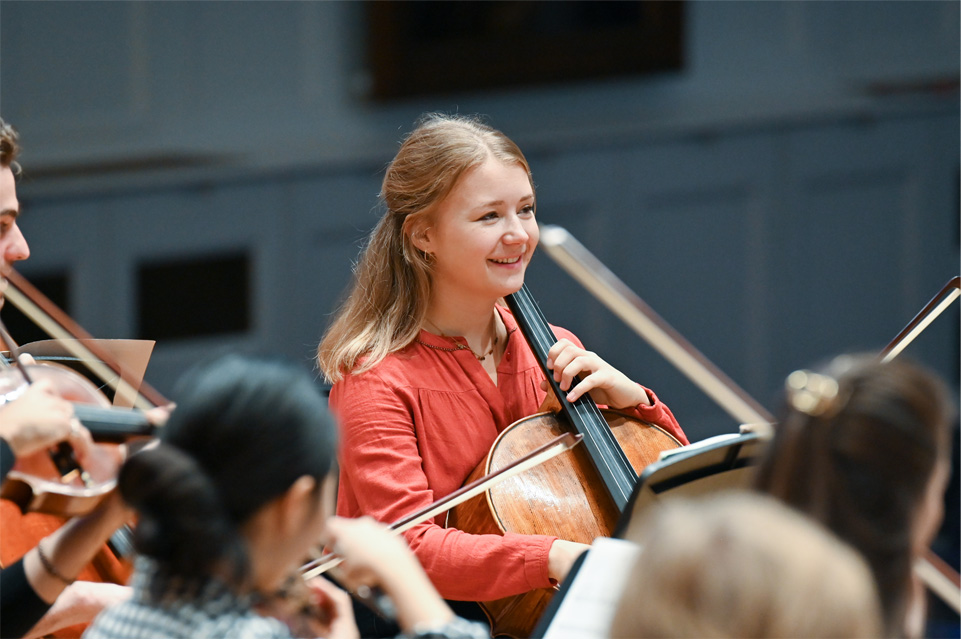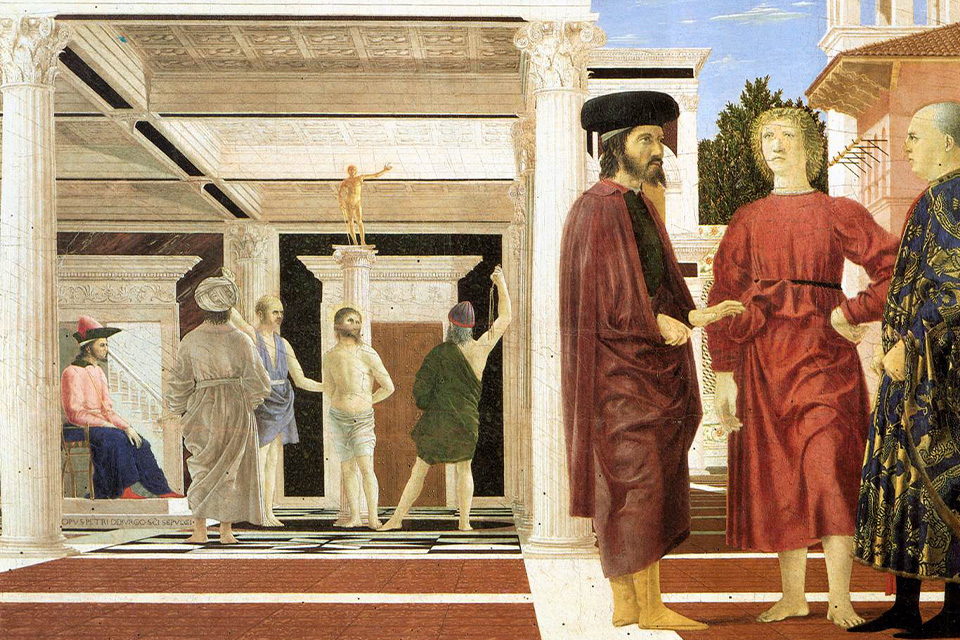
Welcome to our Pianism in the Long Nineteenth Century conference. Here you can find all of the conference papers and interviews.
You can also view a recording of the Q&A session below. If you have any further questions, please feel free to get in touch. We hope you enjoy the conference and the wonderful insights of our speakers.
Watch a recording of the Live Q&A session
1. In Conversation with Vanessa Latarche: Pedagogy from the Nineteenth Century to Now
Head of Keyboard Professor Vanessa Latarche joins Yuki and Ellen to discuss many aspects of pedagogy in the Nineteenth Century. A number of pertinent issues of pedagogy are covered, including how students and pedagogues alike deal with issues such as finding ‘the right sound’ and performers ‘finding their own sound.’ Professor Latarche elaborates on teaching different repertoires, teaching different sounds and techniques, and teaching through a pandemic. Her student Anastasiia Nesterova performs Beethoven’s Waldstein Sonata as demonstrative of this discussion.
The conversation moves to Felix and Fanny Mendelssohn. Felix Mendelssohn’s Songs Without Words are discussed as being not just pieces with great pedagogical applications, but beautiful and great works in their own right. Professor Latarche highlights the melodic and musical content within smaller structures shown in Mendelssohn’s works. The interview then turns to Mendelssohn’s sister, Fanny. Her Easter Sonata (1829) was rediscovered by Angela Mace Christian, and was given its UK Premiere in 2017 by Sofya Gulyak (RCM Piano Professor). We discuss this work itself, and Fanny Mendelssohn’s life and works, and their reception in recent years.
Watch the conversation with Vanessa Latarche
2. Anna Scott: To Change One's Skin According to the Music at Hand
The pupils of Johannes Brahms and Clara Schumann were neither composer-pianists, like their illustrious teachers, nor idols and entertainers, like their showier peers. But although they operated in a liminal space somewhere between or beyond these poles, their recordings, like so many pianists born in the 1860s and 70s, evidence a level of agency and variety—both between and within single performances—that is simply unheard of today. While it might be tempting to ascribe these qualities to their liberal use of the period's expressive devices, what one finds when precisely emulating their recordings is a deliberate, almost urgent, impulse to alter the notated detail, structure, and time of musical works. After charting this impulse via my imitations of recordings by Fanny Davies, Carl Friedberg, Adelina de Lara, Etelka Freund, and Ilona Eibenschütz, all five styles are applied in a single performance of Brahms's Intermezzo in A Major Op. 118 no. 2 in the hopes of experiencing a modicum of the stunning licentiousness and diversity of approach enjoyed by the Brahms-Schumann pianists.
3. Natasha Loges: ‘Unsuitable for concerts’: Schumann’s Kreisleriana and Carnaval
Robert Schumann’s piano cycles Kreisleriana op.16 and Carnaval op.9 are a mainstay of the keyboard repertoire. Yet they were rarely heard in their entirety during the century, and there is no reason to believe Schumann expected such collections to be performed complete. Indeed, he was unconvinced that they were performable in public at all. The most important exponent of his works, his wife Clara Schumann, shared his reservations, and took a creative approach to these cycles during her long career. Drawing on her surviving concert programme archive, I explore how she programmed the cycles in public, tracing how her approach evolved over the years. I conclude with some reflections for pianists today.
Watch Natasha Loges's paper
4. In Conversation with Stephen Hough: Schumann Op. 16, 17 and 18
Stephen Hough joins Yuki and Ellen to discuss Schumann’s piano music, focussing on Hough’s upcoming CD to be released by Hyperion later this year. The CD features three famous works from the composer’s early period: Kreisleriana Op. 16 (1838), Fantasie in C Op. 17 (1839), and Arabeske Op. 18 (1839). Many pianists know the challenges of Kreisleriana and the Fantasie; being two of Schumann’s most famous works, but less is known of the Arabeske, which forms an encore to this CD.
In this interview, as well as detailing Hough’s upcoming album, we discuss Schumann’s nuance and beauty as a piano composer. Hough elucidates on what draws him to Schumann as a pianist: Schumann’s voice, how he was the first composer to write piano music, and not just music simply to be played on the piano. Hough details how Schumann not only was a trailblazer in his own way, but also gave other composers courage to treat the piano as a heroic figure in nineteenth-century music. Hough discusses the profundity in the smallness, particularly in relation to multi-movement works, and the world of imagination within smallness that audiences and performers alike can find in Schumann’s music.
Stephen Hough’s album of Schumann will be released later this year. In the meantime, you can visit Hyperion Records to purchase Hough’s other recordings, and his website for upcoming concert information.
Watch the conversation with Stephen Hough
5. In Conversation with Danny Driver: Amy Beach and her Piano Concerto Op. 45
In this interview, Danny Driver discusses Amy Beach and her piano concerto Op 45, detailing the work’s performance history. Amy Beach – who was known as a child prodigy – received much criticism regarding form and instrumentation when she premiered the work with the Boston Symphony Orchestra. However, when she toured the concerto in Europe and later in North America, the work was met with critical acclaim. Beach’s concerto, however, and works generally were largely not performed after 1917 until the 1970s. Interest in Beach’s works has grown gradually since then.
As well as discussing the history and reception of the work, this discussion delves into other aspects of the work, including Driver’s own performances and recordings of the work. Beach’s position within the nineteenth-century cannon is questioned, both in terms of the Nineteenth Century, and concert programming contemporarily. Her melodic writing – which included a repertory of over 150 songs, as well as virtuosic piano writing – was very much of the tradition of Liszt and Brahms, without being derivative. To quote Driver, Beach’s compositional style ‘was not effeminate, […] but explosive, […] dangerous and huge.’ Driver makes note of the importance of hearing and engaging with this lesser-known repertoire, continually questioning what we are comfortable with, and how necessary it is for young and emerging performers to engage with music by lesser known and under-represented composers.
You can purchase Danny’s recording of the Amy Beach Concerto, along with his other recordings released by Hyperion. For upcoming performances by Danny visit his website.
Watch the conversation with Danny Driver
6. Neal Peres Da Costa: Saint-Säens, Farrenc and the Piano in Chamber settings
How did piano playing sound in mid-nineteenth-century Paris? Sigismund Thalberg in his L’Art du chant appliqué au piano op. 70 (c. 1853) gives rules intended to help pianists sing at the piano. Amongst these, Thalberg includes advice on the use of manual asynchrony (playing melody after accompaniment) and chordal arpeggiation to support melody notes. These two expressive devices were also promoted in other written sources of the era. Indeed, research points to these practices as being part of a continuum of practice dating back to at least the 17th century, which continued on throughout the 19th century, and were still to be heard in the playing of some pianists until the middle of the 20th century.
Of particular significance are the recordings of Camille Saint-Säens’ (1835-1921) on piano roll and wax disc, which provide an opportunity to hear how one of the oldest 19th-century pianists on record approached these performance practices. Saint-Saëns’ interpretations of his own works provide clearer understanding of the hidden meanings in his notation, its symbols and signs. Analysis of these documents help build a picture of Saint-Säens’ idiosyncrasies as a pianist/composer, as well as informing of general characteristics in 19th-century French pianism which have influenced recent creative work by the author. This presentation will present some examples and look at the implications for application in re-imagined interpretations of Piano Quintets by Saint-Saëns and Louise Farrenc.
Watch Neal Peres Da Costa's paper
Get in touch
If you have any queries about the Pianism in the Long Nineteenth Century conference, please contact Ellen Falconer at the below email address.












